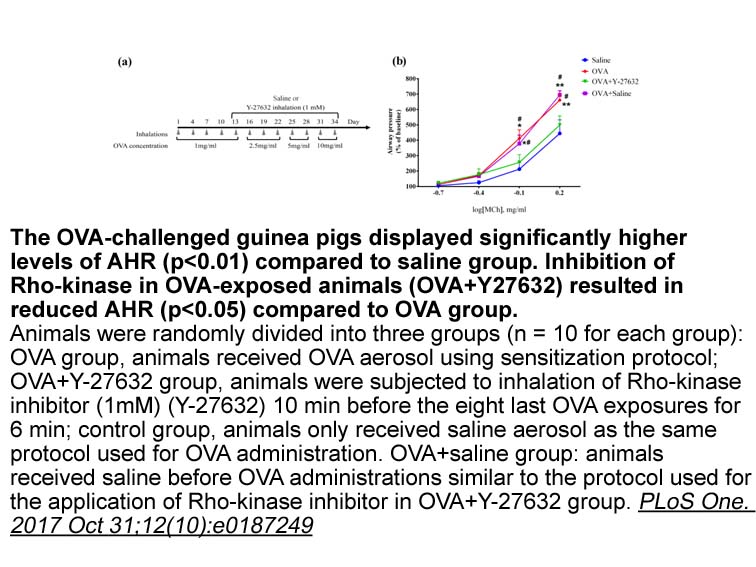Archives
The mechanisms that control Ahr transcription are
The mechanisms that control Ahr transcription are poorly understood, especially when considering cell type-specific regulation. A recent report suggested that the Ahr transcription might be directly promoted by RORγt [retinoic H-Lys(Ac)-OH.HCl receptor receptor (RAR)-related orphan receptor γt] based on ChIP-Seq analyses of RORγt binding in Th17 cells, a type of T helper cells that express RORγt and secrete signature cytokine IL-17, and express histone acetyltransferase p300 and histone H3 lysine 4 (H3K4)-dimethylation profiles [26]. By extrapolating from these Th17 cell data to group 3 innate lymphoid cells (ILC3s), a subset of lymphocytes that are analogous to T helper cells in their transcriptional regulation and function but do not express antigen receptors, an intriguing hypothesis was proposed that RORγt can directly regulate Ahr transcription in ILC3s via enhancer interactions. This hypothesis is consistent with the observation of high levels of AHR in RORγt+ cells (e.g., Th17/22 cells and ILC3s). However, it is worthwhile noting that AHR is expressed in other cell types [e.g., innate immune cells including dendritic cells (DCs), macrophages, and other innate lymphoid cells] (Li, S., Bostick, J.W., and L.Z., unpublished; [27–30]) in which RORγt expression is presumably negligible or low. In addition, RORγt deficiency prevents Th17 cell differentiation, but does not affect AHR expression (L.Z., unpublished), suggesting a dispensable role for RORγt in regulating AHR, at least in some cell types.
Of note, although Th17 cells and ILC3s share marked similarity in cytokine production and transcriptional regulation, ILC3s are not simply a counterpart of the Th17 cell population that lack T cell receptor. There are clear differences between these two cell types in terms of transcriptional regulation. IL-6 can induce Th17 cells in vitro and in vivo via a STAT3-dependent pathway, and regulates Ahr expression in CD4+ T cells [22–24,31,32] (L.Z., unpublished). Genome-wide ChIP studies in Th17 cell s detected binding of STAT3 (signal transducer and activator of transcription 3) to the Ahr promoter, suggesting that STAT3 directly controls Ahr transcription [33]. However, genetic ablation of STAT3 in RORγt+ cells has no effect on Ahr expression in ILC3s nor on ILC3 development [34]. In addition, whether IL-6 can influence ILC3 development remains unclear. Therefore, the role of RORγt in regulating Ahr transcription needs careful examination in primary ILC3s, including determining Ahr locus occupancy by RORγt using ChIP assay, and addressing transcriptional regulation of Ahr by RORγt using functional assays.
Recent studies have reported direct binding of Ikaros (IKZF), a zinc-finger transcription factor, to the Ahr locus by ChIP assay, and concomitant reduced levels of Ahr transcription in Ikaros-null T cells or Ikaros mutant T cells lacking DNA-binding zinc finger 4 [35,36], suggesting a positive role for Ikaros in Ahr transcription. However, the amount of Il22 transcripts is increased in T cells that express mutant Ikaros lacking zinc finger 4, whereas Cyp1a1 [cytochrome P450 (CYP)1A1] expression is not; this is surprising because both genes are canonical AHR targets [36]. Thus, Ikaros may regulate AHR activity in a gene-specific manner.
TGF-β, retinoic acid (RA), and short-chain fatty acids are abundantly present in the gut and can influence Treg cell differentiation by promoting FOXP3 expression [37]. Furthermore, TGF-β and RA have been shown to promote AHR expression in T cells and mouse embryo fibroblast cells [22,23,38]. Recently, calcitriol, an active form of vitamin D, was shown to inhibit AHR transcription in human CD4+ T cells, which in turn inhibits BATF (basic leucine zipper transcription factor, ATF-like)-induced IL-9 production [39]. Whether these cytokine and metabolite signals regulate Treg cell differentiation through the AHR pathway remains to be determined.
s detected binding of STAT3 (signal transducer and activator of transcription 3) to the Ahr promoter, suggesting that STAT3 directly controls Ahr transcription [33]. However, genetic ablation of STAT3 in RORγt+ cells has no effect on Ahr expression in ILC3s nor on ILC3 development [34]. In addition, whether IL-6 can influence ILC3 development remains unclear. Therefore, the role of RORγt in regulating Ahr transcription needs careful examination in primary ILC3s, including determining Ahr locus occupancy by RORγt using ChIP assay, and addressing transcriptional regulation of Ahr by RORγt using functional assays.
Recent studies have reported direct binding of Ikaros (IKZF), a zinc-finger transcription factor, to the Ahr locus by ChIP assay, and concomitant reduced levels of Ahr transcription in Ikaros-null T cells or Ikaros mutant T cells lacking DNA-binding zinc finger 4 [35,36], suggesting a positive role for Ikaros in Ahr transcription. However, the amount of Il22 transcripts is increased in T cells that express mutant Ikaros lacking zinc finger 4, whereas Cyp1a1 [cytochrome P450 (CYP)1A1] expression is not; this is surprising because both genes are canonical AHR targets [36]. Thus, Ikaros may regulate AHR activity in a gene-specific manner.
TGF-β, retinoic acid (RA), and short-chain fatty acids are abundantly present in the gut and can influence Treg cell differentiation by promoting FOXP3 expression [37]. Furthermore, TGF-β and RA have been shown to promote AHR expression in T cells and mouse embryo fibroblast cells [22,23,38]. Recently, calcitriol, an active form of vitamin D, was shown to inhibit AHR transcription in human CD4+ T cells, which in turn inhibits BATF (basic leucine zipper transcription factor, ATF-like)-induced IL-9 production [39]. Whether these cytokine and metabolite signals regulate Treg cell differentiation through the AHR pathway remains to be determined.